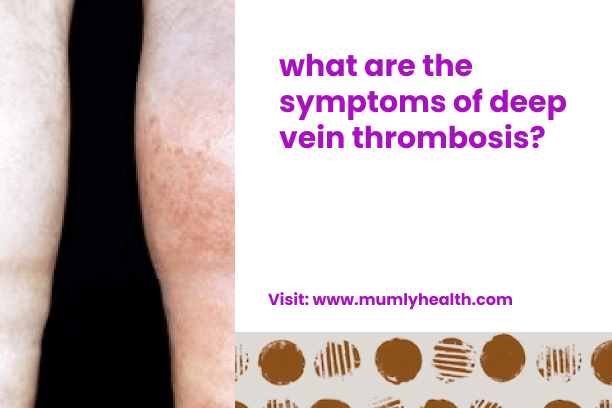Deep vein thrombosis may exhibit similar symptoms to various other health conditions. However, approximately fifty percent of the time, this blood clot forming in a deep vein, frequently located in the leg, manifests no symptoms.
Individuals aged over 60, smokers, those who are overweight, or those who spend prolonged periods sitting are at a heightened risk for this condition. Therefore, it is important to remain vigilant for any signs of a potential issue. If you suspect you may have DVT, it is advisable to promptly consult your doctor.
When blood circulation slows down within your veins, it can result in the formation of a cluster of blood cells known as a clot. If a blood clot develops in a vein deep inside your body, it results in what medical professionals term as deep vein thrombosis (DVT). Typically, this occurs most frequently in the lower leg, thigh, or pelvis, although it can also happen in other areas of the body.
DVT carries the potential for serious health complications, and in certain instances, it can be life-threatening. Therefore, if you suspect the presence of DVT, it is imperative to seek immediate medical attention.
DVT Symptoms
Not all individuals with DVT display symptoms; however, you may observe any of the following:
- Sudden onset of swelling in the leg or arm
- Pain or discomfort experienced while standing or walking
- Warmth in the affected area
- Enlarged veins
- Red or bluish discoloration of the skin
If a blood clot becomes dislodged and travels through the bloodstream, it can become lodged in a lung blood vessel, a condition known as pulmonary embolism (PE), which can be life-threatening.
Some individuals may not realize they have DVT until experiencing symptoms of PE, which include:
- Difficulty breathing or shortness of breath
- Chest pain exacerbated by deep breathing
- Coughing up blood
- Elevated heart rate
DVT Causes
DVT Treatment
our doctor will prioritize halting the growth of the blood clot and preventing it from dislodging and traveling to your lungs. Additionally, they will aim to reduce the likelihood of another occurrence of DVT. This can be achieved through one of three methods:
- Medications for DVT: Blood thinners are the primary medications used to treat DVT, as they reduce the blood’s clotting ability. Typically, a course of these medications may be required for up to six months. In cases of severe symptoms or large clots, your doctor might prescribe potent medicines known as thrombolytics to dissolve the clot. However, these medications come with significant risks such as sudden bleeding and are therefore not frequently prescribed.
- Procedures for DVT: In situations where a patient cannot tolerate blood thinners or if they prove ineffective, your doctor may opt for an inferior vena cava (IVC) filter. This small, cone-shaped device is inserted into the inferior vena cava, the body’s largest vein, to intercept a large clot before it reaches the lungs.
- Home Remedies for DVT: Compression stockings are a non-invasive method to manage DVT. These specialized socks exert pressure, tighter at the ankle and gradually decreasing towards the knee, to prevent blood pooling in the veins. While some types are available over-the-counter, your doctor may recommend a stronger version fitted by a specialist.
Can I Prevent DVT?
Making simple lifestyle adjustments can significantly reduce your risk of developing DVT. Here are some straightforward tips to maintain healthy blood circulation:
- Prioritize Self-Care: Quit smoking, manage your weight effectively, and incorporate regular physical activity into your routine.
- Attend Regular Checkups: Ensure you attend scheduled checkups with your healthcare provider. Adhere to prescribed medications aimed at controlling any existing health conditions.
- Avoid Prolonged Sitting: During extended periods of travel exceeding 4 hours, take breaks to flex and stretch your lower leg muscles. While flying, consider walking up and down the aisle every hour. On lengthy car journeys, stop every 2 hours to stretch. Opt for loose-fitting clothing and stay hydrated.
- Prepare for Post-Surgery Care: Consult your doctor regarding preventative measures against DVT following surgery. They may recommend wearing compression stockings or taking blood thinners. It’s essential to mobilize early after surgery and engage in movement as directed by your healthcare provider.
Conclusion
While deep vein thrombosis (DVT) poses significant health risks, there are various preventive measures and treatment options available to mitigate its occurrence and manage its effects. By adopting healthy lifestyle practices such as regular physical activity, smoking cessation, and weight management, individuals can lower their risk of developing DVT.
Additionally, staying vigilant during prolonged periods of immobility, whether during travel or recovery from surgery, and adhering to medical advice regarding medication and post-operative care are crucial steps in DVT prevention.
Awareness of the symptoms and risk factors associated with DVT, coupled with proactive measures, empowers individuals to safeguard their vascular health and lead fulfilling lives. Remember, early detection, intervention, and lifestyle modifications are key to reducing the impact of DVT and promoting overall well-being.
